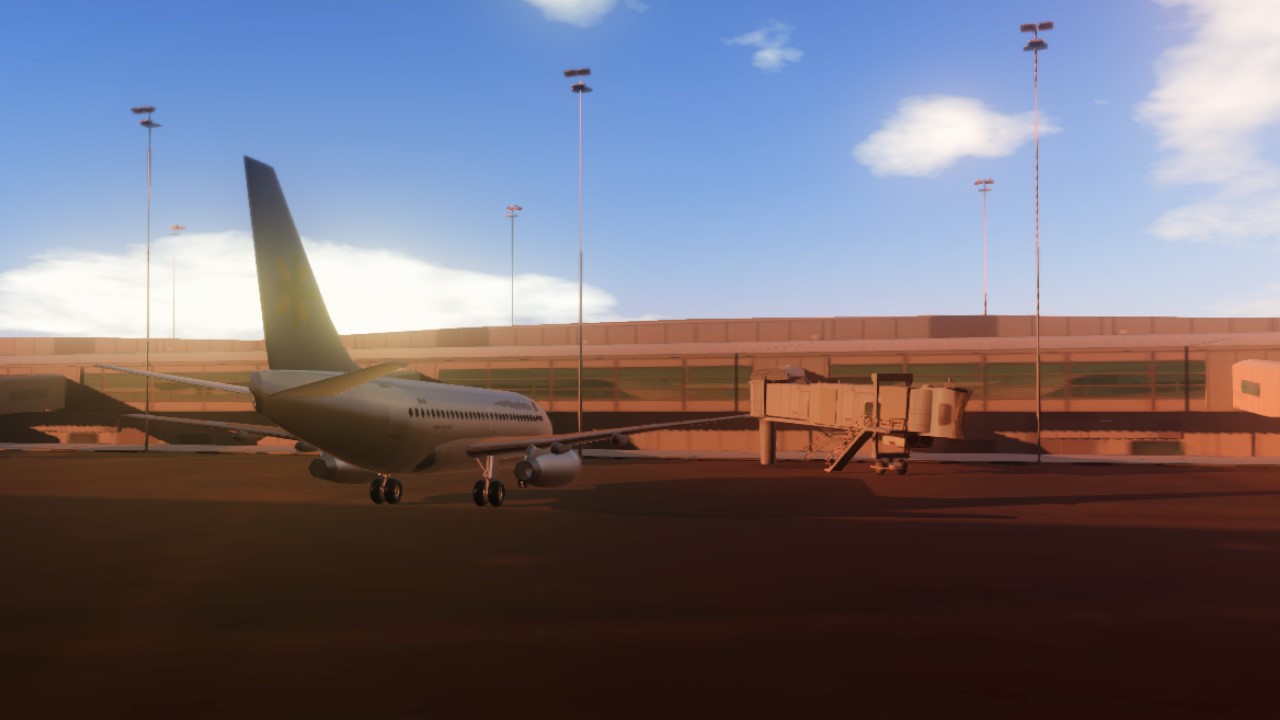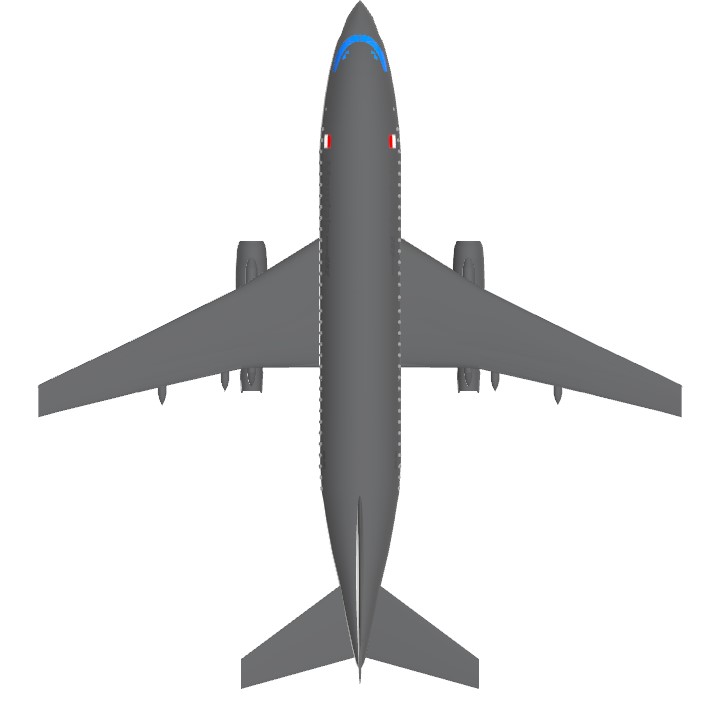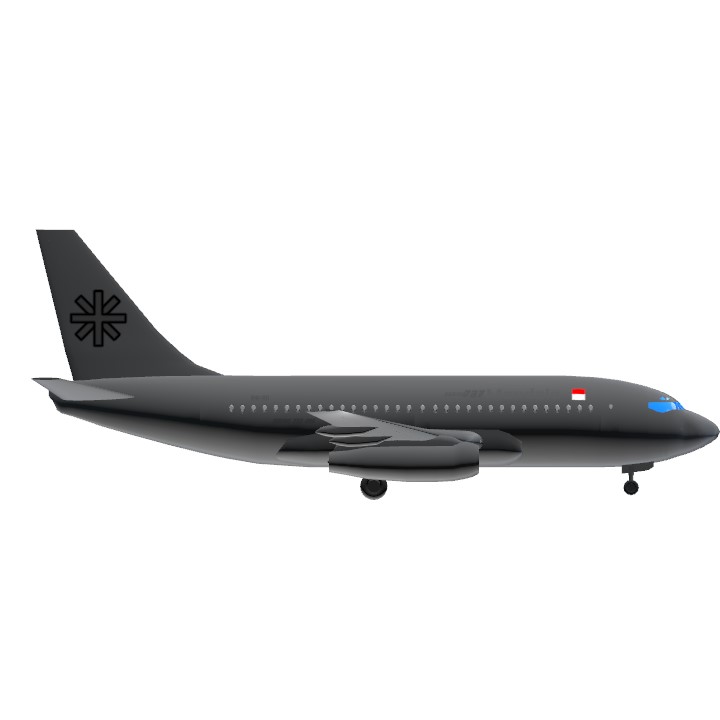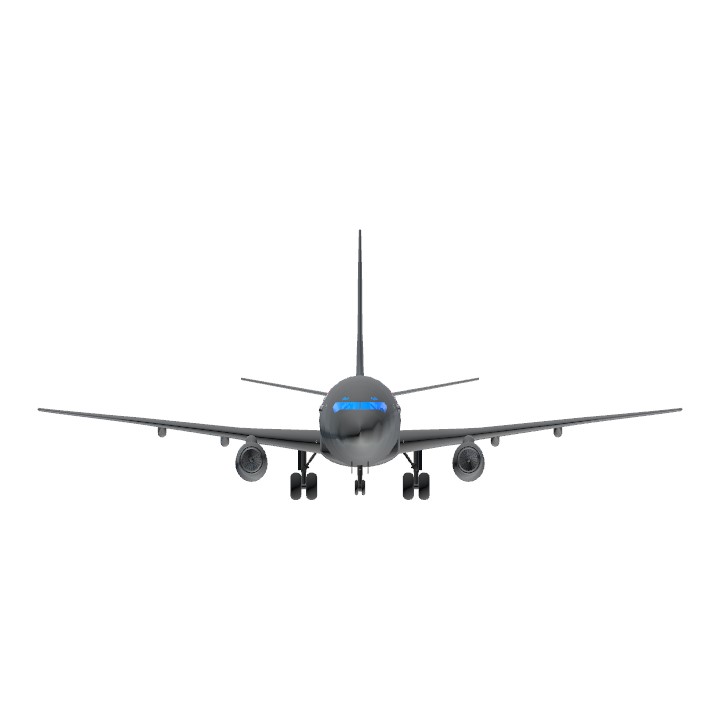A big fat credit to @XAircraftManufacturer and @CL125!
About Mandala Airlines
Tigerair Mandala (formerly Mandala Airlines) was a low-cost carrier headquartered in Jakarta, Indonesia. It was founded in 1969, by members of the Indonesian military dictatorship, as a full service airline. In 2006, as part of the ongoing reforms following the dictatorship ending in 1998, the military was forced to sell Mandala Airlines, with the new owners converting it to a low-cost carrier. In January 2011, facing bankruptcy, Mandala Airlines filed for protection from its creditors, and ceased operations. In May 2011, Singapore based Tiger Airways Holdings made an offer to purchase Mandala, but the transaction did not close until September 2011. The airline did not return to service until April 2012, renamed Tigerair Mandala, following an injection of fresh capital by Indonesian conglomerate Saratoga Investment Corp.
For the next two years, Tigerair Mandala shared Tigerair's sales, distribution and marketing channels. Tigerair Mandala's fleet of new Airbus A320 aircraft (brand new aircraft originally ordered for Tigerair Singapore) flew primarily within the more populous regions of Java and Sumatra, providing domestic and regional international connections of no more than five hours. It planned to increase its fleet to 15 aircraft by year-end 2013[1] and to 25 by 2015.[2]
Tigerair Mandala ceased all operations on 1 July 2014, following the decision of the main shareholders to cease funding the airline.[3] In December 2014, it filed for bankruptcy at the Central Jakarta Commercial Court.[4]
PT Mandala Airlines was founded on April 17, 1969, during the early period of Maj. Gen. Suharto's 31-year military dictatorship, the New Order. The founders were Col. Sofjar, Maj. Gen. Raden Soerjo, Adil Aljol, Maj. (Air Force) Soegandi Partosoegondo, Kasbi Indradjanoe and Darwin Ramli. The airline was owned by PT Dharma Kencana Sakti, which in turn was the commercial arm of Yayasan Dharma Putra Kostrad, a foundation linked to Kostrad, the strategic reserve command of the Indonesian army. The airline was named after Operation Mandala, the military operations to incorporate West Papua into Indonesia. The name also refers to mandala, a Sanskrit term for a diagram symbolizing the universe, which is used as the logo of the corporation.
In its early years Mandala Airlines operated flights between Jakarta and destinations in eastern Indonesia, such as Ambon, Gorontalo, Kendari, Makassar and Manado. As of May 1971, the company's head office was in a building at Jl. Blora No.23 in Jakarta, and its fleet consisted of five turboprop airliners: three Vickers Viscount 800s and two Hawker Siddeley HS 748s.[5] In 1972 Mandala took over Seulawah Air Services (another military-owned airline), which flew to cities in western Indonesia, such as Banda Aceh, Banjarmasin, Medan, Padang, Palembang, Pekanbaru and Pontianak, giving the airline a national coverage.
Under military management, Mandala Airlines kept a relatively quiet existence as a second-tier airline. In 1992, it retired the last of its aged turboprop fleet and replaced them with leased second hand jet aircraft. In 2001, it suffered a financial scandal,[6] in which no less than IDR 135.5 billion (about US$13.5 million) was stolen from the company funds by a senior Kostrad officer.[7]
Despite being awarded as Indonesia's "Most Potential Brand in Airlines Service" in 2002,[8] Mandala found it hard to compete with other recently emerged Indonesian airlines. In September 2005, Mandala experienced a high-profile accident in Medan. At about the same month, political developments in Indonesia forced the military to divest itself of its businesses, resulting in Mandala Airlines being offered for sale. After the Indonesian government refused to take over Mandala Airlines,[9] Cardig International acquired the airline for IDR 300 billion (US$34 million) in April 2006.[10] Indigo Partners acquired 49% of Cardig's shares in October 2006.
An Airbus A319-100 in pre-Tigerair livery (2008)
Within one year of its acquisition, Mandala Airlines transformed its image into a modern airline satisfying international standards of safety.[8] It adopted the low-cost carrier model, in order to compete with other low-cost airlines in Indonesia.[11] Mandala Airlines created a special niche among Indonesia's low-cost carriers by creating an image as a safe airline, taking advantage of the relatively young age of its fleet.
Mandala has now completed the IOSA (IATA Operational Safety Audit) of the International Air Transport Association (IATA),[12] and other manufacturer audits. It contracted maintenance of its aircraft to Singapore Airlines Engineering Company (SIAEC).[13] Its safety improvements were recognized by the European Union as Mandala was among four Indonesian airlines (the others were Garuda Indonesia, Airfast Indonesia and Premiair) officially struck from the EU airline ban list on July 14, 2009.[14] Mandala is listed in Category 1 by the Indonesian Civil Aviation Authority for airline safety quality.[15]
In January 2009, Mandala Airlines completed the phasing out of its older Boeing aircraft, replacing them with newer Airbuses. On April 20, 2009, Mandala moved its Jakarta operations to the new Terminal 3 of the Soekarno-Hatta International Airport.[16] In April 2010, Mandala Airlines announced international services to Hong Kong, Macau and Singapore. These services started on June 25, 2010.[17]
Shortly after services between Jakarta and Macau started on 21 July 2010, the airline announced that all flights between 22 and 29 August 2010 had been cancelled. Concerns were raised by some passengers that the company did not provide adequate information about the abrupt cancellations.[18]
On January 13, 2011, Mandala Airlines temporarily stopped flying all of their fleet due to debt problems. In May 2011, Singapore-based Tiger Airways thru Road Aviation Pte. Ltd.[19] and Saratoga Investama, an Indonesian strategic investment company owned by Edwin Soeryadjaya, Patrick Walujo and Sandiaga Uno, announced their plans in a filing to the Singapore Stock Exchange on Thursday. Tiger Airways will acquire a 33 percent stake, while the Saratoga Group will buy 51 percent of Mandala.[20] Mandala Airlines will focus on Low Cost Carrier (LCC) market because one of the shareholders, Tiger Airways also run an LCC operation.[21]
The company was reported to have asked the commercial court to delay debt recovery action against the airline.[22] The official application for postponement of debt payments to the Commercial Court has been filed for Rp.800 billion to about 271 creditors.[23] At end of February 2011, the creditors had finally accepted the airline's debt settlement proposal to convert debt to equity. It was approved by 70.58 percent of total creditors from the total debt of Rp.2.4 trillion.[24] After struggle with the funds, on September 24, 2011, the acquisition transaction was finally closed. Mandala would be back in the air 90 days after it, but certainly should got a new Air Operator Certificate first during it.[25] Two Mandala aircraft have been checked by the Transportation Ministry inspectors and Mandala Airlines have to resume service by February 15, 2012, or its AOC license would be revoked. Mandala will have 10 aircraft within one year.[26]
Mandala resumed operations on Thursday 5 April 2012 as a partner airline of Tiger Airways, with one domestic route between its home base Jakarta and Medan, the capital of North Sumatra. This will be followed by its first international destination when it launches the Medan-Singapore route on 20 April 2012,[27] adding a second Indonesian destination to Tiger's Singapore network after Jakarta. From May, Tiger Airways Mandala will also fly twice daily to Malaysia's capital Kuala Lumpur from Jakarta.[28] Passengers holding on to Mandala tickets for flights after the company ceased operations in 2011 were offered a complimentary travel voucher redeemable through the company's new Tiger-based website.
On July 3, 2013, as part of the Tiger Airways Group, Mandala Airlines announced its transformation into ‘Tigerair Mandala’ (RI) in conjunction to Tiger Airways brand refresh to Tigerair. By operating under the new brand name, the airlines also adopted a new logo.
The change is also occurring to other airlines under the Tigerair Group, namely Tiger Airways to Tigerair (TR), Tiger Australia to Tigerair Australia (TT) and SEAIR to Tigerair Philippines (DG).[citation needed]
Corporate identity
This version of the logo was used from 1969 to 2006.
Mandala Airlines logo from 2006 to 2012.
The airline's logo is a golden eight-pointed mandala reflecting the eight characters of humanity and the eight elements in Javanese tradition, with a five-petaled lotus in its centre reflecting Indonesia's five-principled state ideology, Pancasila. A new logo was unveiled on November 1, 2006, emphasizing the new image of the corporation. The new logo, designed by Veronica Halim and Eddy Purwanto of Nuage Branding, keeps the mandala and lotus theme of the original, but has a more streamlined design.
The current livery of Mandala Airlines is a "Eurowhite" scheme, consisting of a white fuselage with a blue 'mandala' title. The company logo is applied on the tail and the outboard sides of engine nacelles. Mandala's previous livery was also a "eurowhite" scheme with a different typeface for the 'Mandala' title, a blue tail and the original logo. The airline's earliest scheme was a bare-metal lower and white upper fuselage with a blue cheatline across the cabin windows and a red 'MANDALA' title.
Other recent liveries used by Mandala Airlines include a gold and blue wavy scheme with a large billboard 'Mandala' title introduced in early 2008, a mainly-white scheme with gold and blue hockey stick stripes on the fuselage and a blue tail, and an all-white scheme.
Following its restructuring, the new hybrid Tiger Airways Mandala livery reflects its status as Tiger Airways' partner airline in Indonesia by keeping the blue 'mandala' title on the fuselage of the Airbus A320 but having its wingtips and logo on the tail replaced with Tiger's stripes and colors.
From 2013, the striped aircraft tail that used to be the main element of Tigerair Mandala's logo has made way for contemporary grey rounded font typography, with orange accents and an orange smile-looking tail.
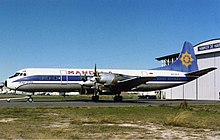
The airline's logo is a golden eight-pointed mandala reflecting the eight characters of humanity and the eight elements in Javanese tradition, with a five-petaled lotus in its centre reflecting Indonesia's five-principled state ideology, Pancasila. A new logo was unveiled on November 1, 2006, emphasizing the new image of the corporation. The new logo, designed by Veronica Halim and Eddy Purwanto of Nuage Branding, keeps the mandala and lotus theme of the original, but has a more streamlined design.
The current livery of Mandala Airlines is a "Eurowhite" scheme, consisting of a white fuselage with a blue 'mandala' title. The company logo is applied on the tail and the outboard sides of engine nacelles. Mandala's previous livery was also a "eurowhite" scheme with a different typeface for the 'Mandala' title, a blue tail and the original logo. The airline's earliest scheme was a bare-metal lower and white upper fuselage with a blue cheatline across the cabin windows and a red 'MANDALA' title.
Other recent liveries used by Mandala Airlines include a gold and blue wavy scheme with a large billboard 'Mandala' title introduced in early 2008, a mainly-white scheme with gold and blue hockey stick stripes on the fuselage and a blue tail, and an all-white scheme.
Following its restructuring, the new hybrid Tiger Airways Mandala livery reflects its status as Tiger Airways' partner airline in Indonesia by keeping the blue 'mandala' title on the fuselage of the Airbus A320 but having its wingtips and logo on the tail replaced with Tiger's stripes and colors.
From 2013, the striped aircraft tail that used to be the main element of Tigerair Mandala's logo has made way for contemporary grey rounded font typography, with orange accents and an orange smile-looking tail.
About Mandala Airlines Flight 091
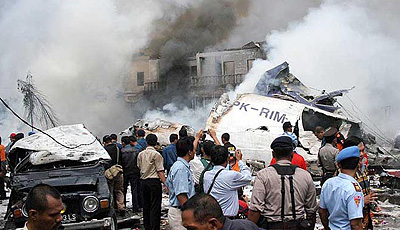
Mandala Airlines Flight 091 was a scheduled domestic passenger flight from Medan to Jakarta, operated by Mandala Airlines with a Boeing 737-200Adv. On September 5, 2005 at 10:15 a.m. WIB (UTC+7),[1]:?2? the aircraft stalled and crashed into a heavily populated residential area seconds after taking off from Polonia International Airport. Of the 117 passengers and crews on board, only 17 survived. An additional 49 civilians on the ground were killed.[2]
The crash of Flight 091 was a shock to North Sumatrans as the leader of North Sumatra province, Governor Rizal Nurdin, and his predecessor Raja Inal Siregar, were among the passengers and both were killed in the crash. There were 149 fatalities, making it the deadliest aviation accident involving a Boeing 737-200. It was the second deadliest airliner accident in North Sumatra after Garuda Indonesia Flight 152.[2][1]
The Indonesian National Transportation Safety Committee (NTSC) concluded that the crash was caused by the actions of the flight crew, in that they did not configure the aircraft properly for take-off. The retracted flaps and slats resulted in the aircraft being unable to fly due to insufficient lift. The aircraft take-off warning was not heard and investigators stated that it was possible the pilots did not receive a warning about the improper configuration, and were therefore unaware of their erroneous actions.[2][1]
The aircraft was a Boeing 737-230 Adv with registration PK-RIM. Built in 1981, it was initially delivered to Lufthansa and was registered as D-ABHK. The aircraft was given the name "Bayreuth." It was acquired by Mandala Airlines in October 1994. The aircraft was 24 years old at the time of the accident and had a Certificate of Airworthiness valid until November 2005.[1]:?7?
The aircraft was carrying 112 passengers and 5 crew members, consisting of 2 flight crew and 3 cabin crew. In total there were 114 adults and 3 children on board.[3] The majority of those on board were Indonesians; however there were also foreigners on the aircraft. The Chinese embassy in Jakarta confirmed that there were 2 Chinese citizens from Fujian on board Flight 091.[4] Official also confirmed the presence of a 3-year-old Japanese child on board Flight 091.[5][6]
Among the passengers were the incumbent governor of North Sumatra, Rizal Nurdin, and his immediate predecessor, Raja Inal Siregar. Nurdin was flying with his daughter to attend a national Indonesian governors meeting with then-President of Indonesia Susilo Bambang Yudhoyono.[7] A member of the Indonesia Regional Representative Council (DPD), Abdul Halim, was also on board the flight.[8]
The captain, 34-year-old Askar Timur, had 7,552 flight hours, including 7,302 hours on the Boeing 737. The first officer, 31-year-old Daufir Efendi. had 2,353 total flight hours, with 685 of them on the Boeing 737.[1]:?5–6?[9][10] The cabin crews were Dewi Setiasih (24),[11] Novi Maulana Sofa (22)[12] and Agnes Retnaning Lestari (31).[13][3]
All times in this article are Western Indonesia Time (WIB) (UTC+7).
Flight 091 was a scheduled domestic passenger flight from Polonia International Airport (now Soewondo Air Force Base) in Medan, the largest city in Sumatra, to Soekarno-Hatta International Airport in the Indonesian capital Jakarta. Flight 091 was the second trip of the day for the aircraft, which had earlier flown from Jakarta to Medan with the same flight crew.[1]
The aircraft was pushed back at 09:52 a.m. and start-up clearance was given immediately after. It then taxied out onto Runway 23 and was cleared to take off at 10:03 a.m. with an altitude of 1,500 feet (460 m).[1]
Accident
Flight crews then added thrust and the aircraft began rolling on the runway. As it was rolling, passengers noted that the aircraft took longer than usual to take off from the airport, even though the aircraft was already in a nose up position. The aircraft briefly took off, then veered to the left and to the right, stalled and then the tail impacted the runway.[14] It briefly lifted off for the second time before crashing again onto the runway. As the tail struck the runway, it left marks on Runway 23.[1]
An illustration made by NTSC on the path of Flight 091 during the crash
The aircraft then struck several approach lights located at the end of the runway before traveling across grass, crossing a small river and finally crashing onto the crowded Djamin Ginting road. Onlookers and motorists on the road panicked as the aircraft came towards them. The left wing struck a building and the aircraft exploded into flames. It broke into three parts. Passengers on the aft fuselage stated that the front part of the aircraft was obliterated as the aircraft exploded.[15] It continued to slide onto the road, hitting multiple cars, bikes, powerlines and streetlamps and destroying several shops and houses.[16] Several unnoticing drivers got their vehicles flipped by the sliding aircraft and subsequently burst into flames.[17] The aft fuselage then came to rest in the middle of the road.[1][18]
Immediate aftermath
As the aircraft's 41,000 kg (90,000 lb) of fuel ignited, it caused a massive fire in the area. Multiple houses and shops nearby caught fire, trapping residents and shoppers.[19][20] The situation was chaotic and was filled with screams of residents who were searching for their relatives and families in the neighborhood, while dozens of people were seen running with their clothes alight.[6][21] In the Polonia airport control tower, air traffic controllers immediately closed the airport and notified the airport's fire brigade about the crash. However, when fire crews arrived at the end of Runway 23, they realized that the crash site was outside the airport perimeter and that there was no access to the accident site.[1]
Locals immediately assisted the search and rescue operation. Medan's firefighting units and ambulances were immediately dispatched onto the scene. As rescuers had not arrived at the crash site, multiple victims had already been transported with private cars and public minibuses. Rescuers were quickly overwhelmed by the number of victims and the number of onlookers at the crash site.[22] As there was no coordination among the rescue team, the evacuation was severely hampered. The chaotic situation and crowded condition of the crash site rendered the evacuation process to be difficult.[23][1]
Survivors escaped from the burning aircraft through a gaping hole at the front part of the remaining aft fuselage. As the fire on the aircraft intensified, residents noticed that one of the pilots was still alive. They then tried to extricate him from his seat. However, as they were unfamiliar with the seat's harness, they were unable to get him out. An explosion suddenly struck the cockpit, causing the rescuers to run away.[1]
To ease the evacuation process, residents had to line up the bodies that they had found earlier. Indonesian Army personnel were deployed to assist the search and rescue operation. Rain then started to fall around noon, effectively dousing the flames in the area.[24] According to residents who had tried to save the pilot, the pilot’s seat was completely burnt and his body was nowhere to be found.[1] By this time, more than 50 bodies had been recovered. They were taken to various hospitals across Medan, mainly Adam Malik Hospital. Officials also used the hall of Polonia International Airport to store victims pending identification.[25]
On the night of September 5, the Indonesian Minister of Transportation Hatta Rajasa announced the death toll from the crash. A total of 149 people had been killed,[26] of whom 49 were civilians on the ground. 17 passengers survived the accident, with 100 of those on board (including all five crew members) known to have died.[2] Two of the survivors, a mother and her 17-month-old child, were unharmed in the crash.[27] Most of the survivors were seated at the aft fuselage. A passenger told Indonesian news channel MetroTV from hospital that he and five other people seated in the back of the plane in Row 20 had all survived. "There was the sound of an explosion in the front and there was fire and then the aircraft fell," he said. The survivor said he escaped the blazing wreck by jumping through the torn fuselage and fleeing on foot as four large explosions erupted behind him.[28] Officials reported that at least 16 houses and 32 vehicles had been destroyed by the crash of Flight 091.[29]
Rizal Nurdin, the Governor of North Sumatra, former governor Raja Inal Siregar, his immediate predecessor, and Senator Abdul Halim Harahap, a member of the Regional Representative Council, were among the dead.[30][2]

An illustration made by NTSC on the path of Flight 091 during the crash
In response to the death of Senator Abdul Halim, the Indonesian Regional Representative Council declared 3 days of mourning. The Indonesian flag in the building of the People's Consultative Assembly was flown at half-mast.[31] To honor the victims of the crash, a minute's silence was observed by the Indonesian House of Representatives.[32] The North Sumatra provincial government also declared 3 days of mourning and ordered flags to be flown at half-mast throughout the province.[33] Meanwhile, Indonesian President Soesilo Bambang Yudhoyono immediately asked the Indonesian Ministry of Transportation to investigate the crash.[34] He postponed the national Indonesian governors meeting in Jakarta and decided to visit the crash site.[35] He later attended the funeral of North Sumatran Governor Rizal Nurdin.[36]
Members of the 5th Commission of the Indonesian People's Representative Council, responsible for transportation in Indonesia, announced it would summon the then-Indonesian Minister of Transportation Hatta Rajasa and representatives from Mandala Airlines in response to the crash.[37] Speaker of the 5th Commission, Sofyan Mille, also asked the Indonesian government to regulate low-cost carriers in Indonesia in order to prevent "cost-cutting".[38]
In the following days, the Indonesian Ministry of Transportation conducted a "special check" on multiple Boeing 737-200s from various domestic airliners at Soekarno-Hatta International Airport.[39][40] The check resulted in the grounding of four Boeing 737-200s as officials reported several maintenance issues with the aircraft. The aircraft were grounded indefinitely until the operators resolved the issues.[41]
The Indonesian Ministry of Home Affairs appointed then-deputy governor of North Sumatra Rudolf Pardede as the acting governor of North Sumatra.[42] This decision, however, was met with opposition from members of several parties due to alleged falsified academic certificate. Party members even threatened to walk out from every meetings attended by Pardede in the future. North Sumatran students also held a demonstration to protest the decision.[43] This sparked a political crisis in North Sumatra which lasted until the next year.[44] Pardede was subsequently inaugurated as the governor of North Sumatra in March 2006.[45]
Mandala Airlines stated that they would fly relatives of the victims to Medan using two aircraft from their fleet.[46] They later stated that a 7-day tahlil would be held at the airlines' main headquarters in Jakarta.[47] Indonesian state-owned insurance company, Jasa Raharja, announced that relatives of each person killed in the accident would receive 50 million rupiah compensation and those who were injured would receive 25 million rupiah.[48] Vice President Jusuf Kalla reassured families that each victims would be compensated by the state.[49]
One day after the crash, officials stated that they had not been able to identify 60 dead bodies and that a mass grave would be dug. The mass grave was dug at the same location where victims of Garuda Indonesia Flight 152 and 1979 Garuda Fokker F28 crash were buried.[50] The mass funeral was held on 7 September and the procession was led by Abdillah, the mayor of Medan.[51]
The investigation was carried out by the Indonesian National Transportation Safety Committee (NTSC), with assistance from the United States National Transportation Safety Board (NTSB) and representatives from Boeing as the manufacturer of the aircraft.[52] The NTSC had also requested the Australian and the Thai authorities for a readout on the black boxes. According to a member of tbe NTSC, Rita Wijaya, the investigation could take up to one year. She promised that the final report on the crash would be made public.[53]
Both flight recorders were recovered immediately after the crash and were sent to the United States for a read out by the NTSB.[54] Even though both recorders were found in good condition, NTSC noted that there was a malfunction on the cockpit area microphone (CAM). As such, investigators could not determine the actual situation inside the cockpit due to the poor quality of the cockpit voice recorder.[1]
According to investigators, since Flight 091 had difficulties in taking-off, investigators decided to investigate three main possible causes; the weight and balance of the aircraft, the condition of the engines, and the configuration of the flaps and slats.[1]
Two days after the crash of Flight 091, the then-head of the Indonesian National Transportation Safety Committee, Setio Rahardjo, stated that the aircraft was carrying 2 tons of durians, out.... Read More..
About 737-200 (damn the description is already too long)
The 737-200 was a 737-100 with an extended fuselage, launched by an order from United Airlines in 1965 and entered service with the launch customer in April 1968. Its unit cost was US$4.0M (1968)[27] ($31.2M today). The -200's unit cost was US$5.2M (1972)[31] ($33.7M today). The 737-200 Advanced is an improved version of the -200, introduced into service by All Nippon Airways on May 20, 1971.[23] After aircraft #135, the 737-200 Advanced has improved aerodynamics, automatic wheel brakes, more powerful engines, more fuel capacity, and hence a 15% increase in payload and range over the original -200s and respectively -100s.[18][32] The 737-200 Advanced became the production standard in June 1971.[33] Boeing also provided the 737-200C (Combi), which allowed for conversion between passenger and cargo use and the 737-200QC (Quick Change), which facilitated a rapid conversion between roles. The 1,095th and last delivery of a -200 series aircraft was in August 1988 to Xiamen Airlines.[1][34]
Nineteen 737-200s, designated T-43, were used to train aircraft navigators for the U.S. Air Force. Some were modified into CT-43s, which are used to transport passengers, and one was modified as the NT-43A Radar Test Bed. The first was delivered on July 31, 1973, and the last on July 19, 1974. The Indonesian Air Force ordered three modified 737-200s, designated Boeing 737-2X9 Surveiller. They were used as Maritime reconnaissance (MPA)/transport aircraft, fitted with SLAMMAR (Side-looking Multi-mission Airborne Radar). The aircraft were delivered between May 1982 and October 1983.[35]
After 40 years, in March 2008, the final 737-200 aircraft in the U.S. flying scheduled passenger service were phased out, with the last flights of Aloha Airlines.[36] As of 2018, the variant still saw regular service through North American charter operators such as Sierra Pacific Airlines.[37] With the improved short-field capabilities of the 737-200, Boeing offered the option of the gravel kit modification features preventing foreign object damage, which enables this aircraft to operate on remote, unimproved or unpaved runways, such as gravel runways, that other similarly sized jetliners cannot.[38] Until retiring its -200 fleet in 2007, Alaska Airlines used this option for some of its combi aircraft rural operations to serve many unimproved runways in Alaska.[39][40] Gravel-kitted 737-200 Combis are still used by Canadian North (which is due to retire their last one in early 2023),[41] Air Inuit, Nolinor Aviation and Chrono Aviation in Northern Canada where gravel runways are common.
As of October 2020, there were 77 Boeing 737-200s in service.[42][needs update]

The 737-200 was brought into service by United Airlines on April 28, 1968.
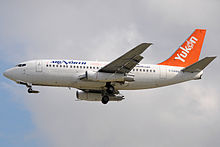
Several Canadian airlines still use the 737-200 due to its gravel runway capabilities. The Boeing "Unpaved Strip Kit" (gravel kit) included a gravel deflector on the nose gear and a vortex dissipator extending from the front of the engine.
Controls are in the game
Also Happy Ramadhan everyone! Enjoy!
Specifications
Spotlights
- AircraftExperimental one month ago
- Poyston001 one month ago
General Characteristics
- Successors 1 airplane(s) +56 bonus
- Created On Windows
- Wingspan 92.6ft (28.2m)
- Length 103.3ft (31.5m)
- Height 40.1ft (12.2m)
- Empty Weight N/A
- Loaded Weight 76,012lbs (34,478kg)
Performance
- Power/Weight Ratio 0.473
- Wing Loading 56.8lbs/ft2 (277.2kg/m2)
- Wing Area 1,338.8ft2 (124.4m2)
- Drag Points 14290
Parts
- Number of Parts 412
- Control Surfaces 5
- Performance Cost 2,090

